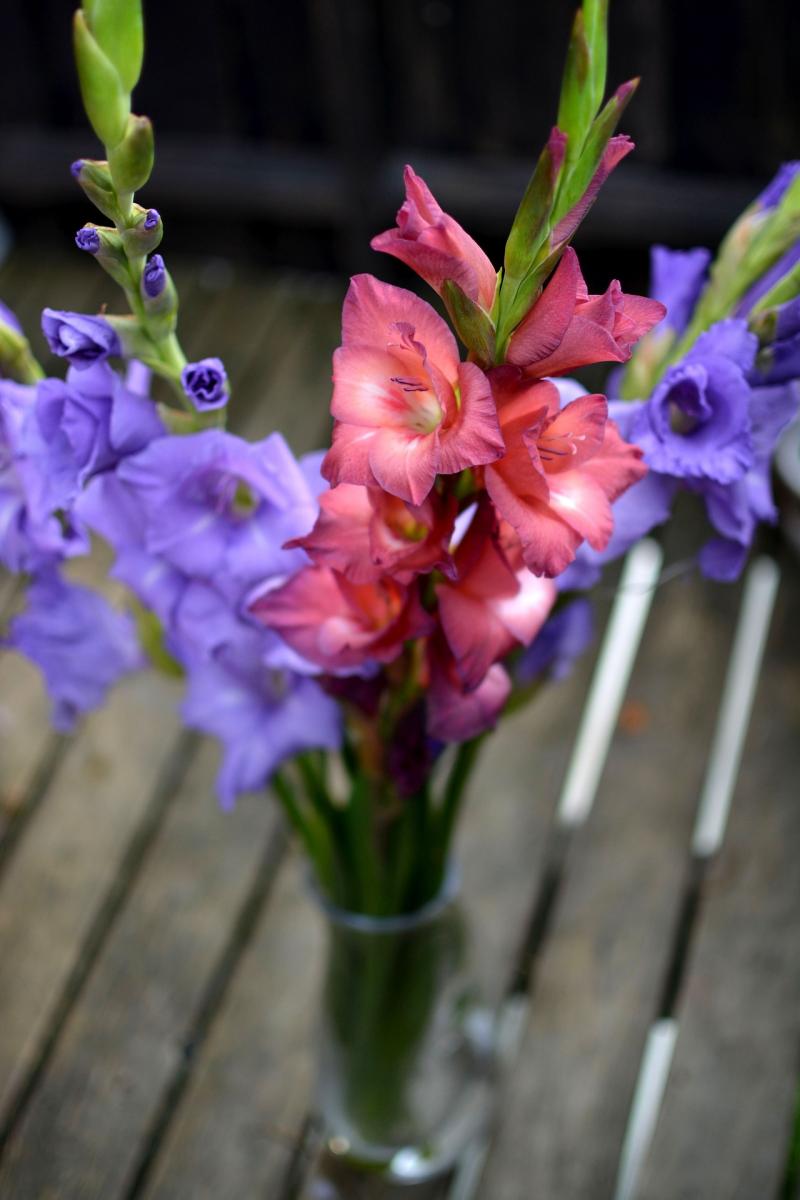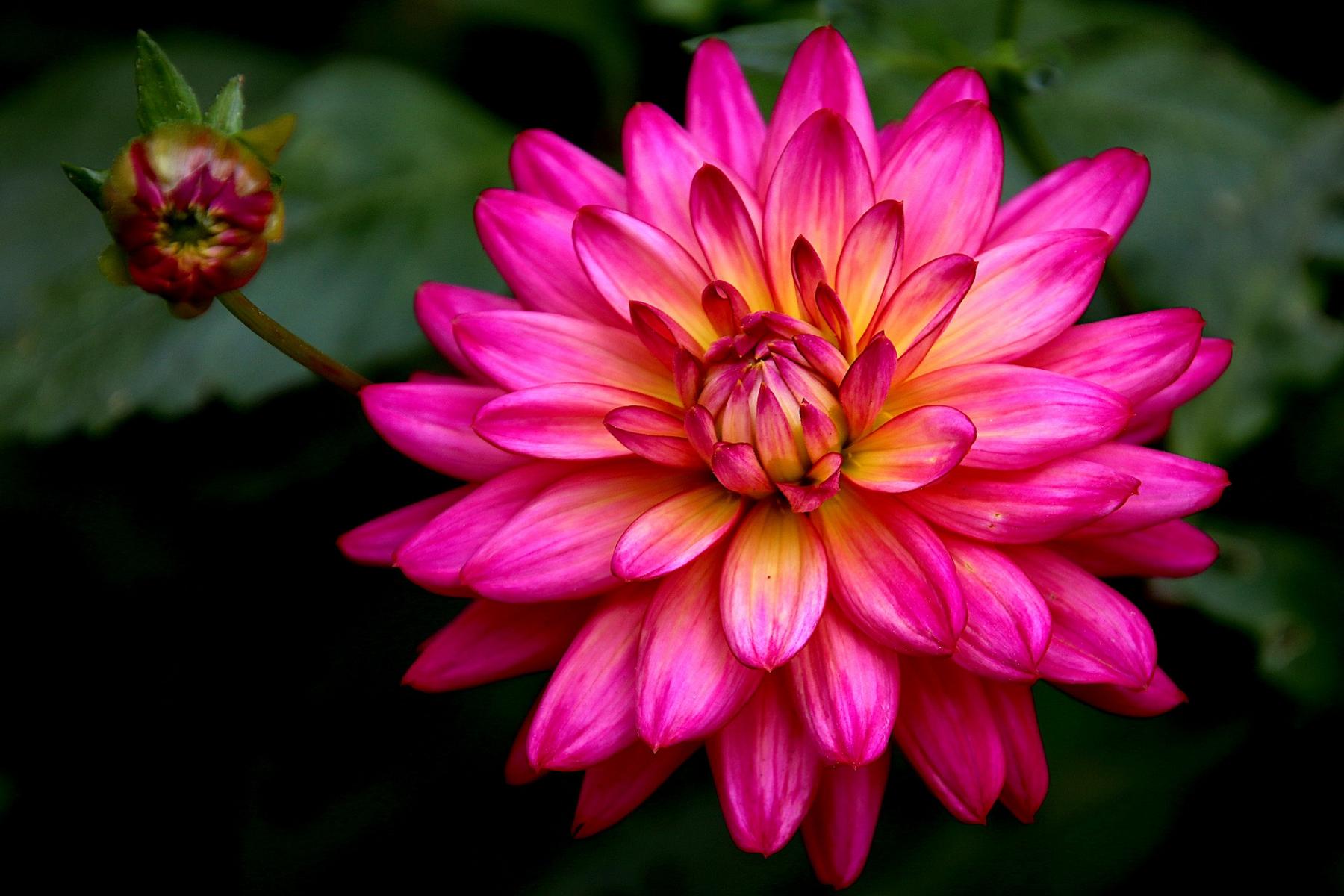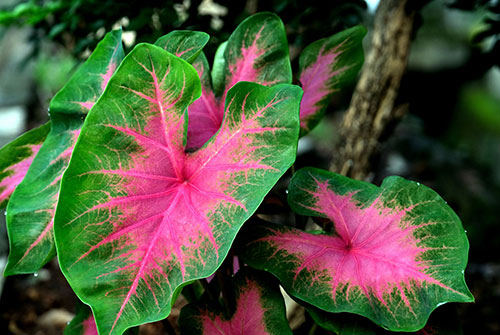
Many tropical or sub-tropical plants are popular additions to Nebraska gardens. They provide great color with their showy flowers and leaves, and also interesting foliage. But since these plants cannot survive a Nebraska winter, even as dormant bulbs in the soil, it's important to dig them in fall and store them properly so that you can replant them next spring.
One benefit of digging up and storing bulbs, rhizomes or tubers in the fall, is that you can save money in your plant budget next year. Plus, rhizomes and tubers can often be divided into several sections, enabling you to create several plants from one.
Common plants that fall into this category include Canna, Caladium, Alocasia and Colocasia (both often commonly known as elephant ears), Gladiola, Dahlia, tuberous begonias and Zantedeschia (calla lily). Ornamental sweet potato tubers can also be treated as a tender bulb, by harvesting them in the fall and replanting the following year.
Are these really a bulb?
In any discussion of ‘bulb’ plants, the most important distinction to make is between hardy and tender bulbs. Hardy bulbs, including tulip, daffodil, crocus, ect., are planted in the fall and can be overwintered in the ground. Tender bulbs, like gladiola, dahlia and canna, are planted in the spring and must be dug up each fall; they are not cold tolerant enough to survive in the ground during winter.
Many tender bulbs are available at garden centers in spring, ready for planting.
But not all ‘bulb’ plants are grown from true bulbs. Some grow from rhizomes (Canna), corms (Gladiolus), or tuberous roots (Dahlia). Botanically, there is a difference, but this is generally important only to the horticulturist. The everyday usage of the term "bulb" includes all plants that grow from fleshy underground storage organs. Regardless of the terminology, summer flowering bulbs are a great way to add a splash of color to the landscape.
Cannas
Cannas are a tropical plant with large spade-shaped leaves and bright red, pink, orange, white or yellow-colored flowers. Canna height ranges from 2 ½ to 3 feet for dwarf varieties, to 6-8 feet for the standard varieties.
Cannas grow from rhizomes, or underground stems, which can be started in pots in mid-March then moved out to the garden after danger of frost is past. The rhizomes can also be planted directly in the garden in mid-May, in an area with well-drained soil and full sun. Fertilize the plants once a month after growth starts and remove flowers as they begin to fade to encourage further flowering.
Once frost has killed the top growth in fall, cut off the foliage and dig up the rhizomes. Brush soil off the rhizomes and store them at 45 to 50 degrees F. Do not allow the rhizomes to freeze.
 Gladiolas
Gladiolas
Gladiolas are a very easy flower to grow, making them perfect for the beginning gardener. They make a great background plant for the garden, at a height of 1-5 feet tall depending on the cultivar you choose.
Gladiolas grow from corms, which produce one flower stalk each. For the best effect, plant the corms in odd-numbered groups of 5-7, 6 inches apart, and 4-5 inches deep. Plantings of single corms are less effective than groups for color and flair. They prefer full sun and well-drained soil. Staking may be needed for tall varieties.
 Dahlias
Dahlias
Dahlias can add BIG color to the garden on 2-8' plants, with 8-12" wide flowers in all the bright colors of the rainbow except blue. Again, tall plants, especially those with equally large flowers, usually need staking to stay standing tall.
Choose a sunny area with well-drained soil and start the tubers or seed directly in the garden mid-May. Feed lightly at first because heavy feedings may delay flowering. Prune side stems allowing only one main stem. Mulch plants after establishment to keep soil cool and preserve moisture.
Tubers must be dug and stored each fall in sawdust or peat at 60 degrees F. Divide the tuber clump in spring leaving a part of the true stem attached to the tuber. One interesting cultivar is ‘Bishop’s Children’ which has single and semi-double flowers in red, orange, yellow, pink, purple and bicolor, 3-4 inches across, with dark maroon-black foliage. Height 2 ½-3 feet.
Tuberous Begonias
There are many tuberous types of begonias available. Traditionally, we think of the large camellia flowered types with various color combinations grown from tubers. But also available are tuberous types grown from seed. These seed-started types are known as 'Nonstops'. Flowers are smaller but produced in profusion.
Begonias prefer a soil mix with plenty of peat moss and perlite for good soil drainage. The tubers can be placed directly in pots or flats of a peat perlite mix and kept at 68 to 75 degrees F for sprouting to occur. Once the pink shoot starts to grow, keep plants in a sunny area. Plants should be kept evenly moist but not wet. Fertilize every two weeks avoiding fertilizers with ammonia salt sources because crinkled and curled leaves can occur.
 Caladium
Caladium
The caladium is a bright, bold-leafed plant that is grown mainly for its foliage in both sun or shade. It produces broadly arrow-shaped leaves in striking color combinations of reds, pinks, greens, whites and bi-colors. Flowers are insignificant and can be removed when first noted.
Start the potato-like tubers in early March in a peat type soil. Plant tubers in a six- to eight-inch pot, knobby side up, about two inches deep. Keep soil moist during the rooting period. It is essential to provide bottom heat of 75 to 80 degrees F to facilitate sprouting of tubers. Move plants outdoors after all frost is past to a shady, wind-protected location. Water as needed especially on hot days.
Harvesting Additional Tender Bulb and Bulb-like Plants
If you haven't dug your tender plants yet, it's time now to get that done. Anytime after the foliage has died back, usually after a couple light frosts, it's OK to dig up the roots. Be careful when digging not to damage the roots. Gently loosen the soil around the roots with a garden fork or spade, starting 10-12 inches or more away from the plant stem to avoid cutting the roots. Once the soil is loose, use the dead foliage to lift plants out of the ground.
Brush as much loose soil away from the root structures as possible. It's usually better not to wash the roots. Allow the bulbs or roots to cure at temperatures of 60-70 F degrees, away from strong wind or direct sunlight, for about 1-3 days before placing them in storage.
In the case of gladiola, dig up the old corm and new growth together, and allow them to cure for about three weeks. Then remove the old corm from the base of the new growth, and place the new corms in storage. Very small cormels can be saved, but it will be several years before they reach blooming size.
Storing
Store and label each group of plants to keep colors and cultivars together; one easy way is to store small bulbs or roots in labeled paper bags. Choose a cool (50-55 F degree), dark location for storage.
Be sure to check periodically during winter for soft rotting roots, or excessive drying. If rhizomatous or tuberous plants, such as canna, dahlia and calla lilies, which are most prone to excessive drying during winter, start to wrinkle or shrivel, it's time to dunk them in water and remoisten the vermiculite or peat moss so that it is slightly damp. It can also help slow down moisture loss, to place dahlias, and calla lilies in perforated plastic bags with some vermiculite or peat moss, then place the bags in a larger container with additional vermiculite or peat moss to reduce moisture loss.
In spring, divide rhizome and tuberous roots. Remove any dead areas, and make sure that each division has at least one growing point, or "eye". Allow the cut sections to dry for a few days before replanting or potting.
Images: Canna, Gladiolus, Dahlia and Caladium from Pixabay.com.